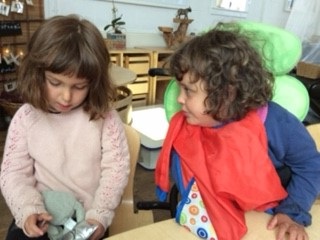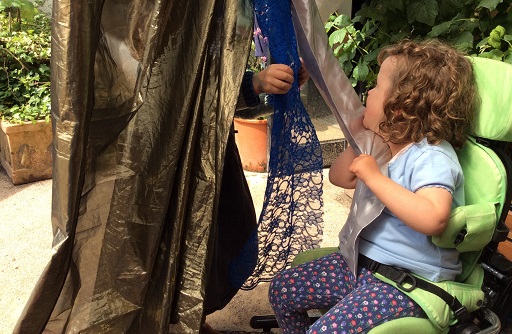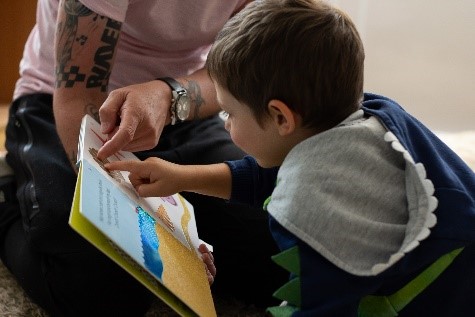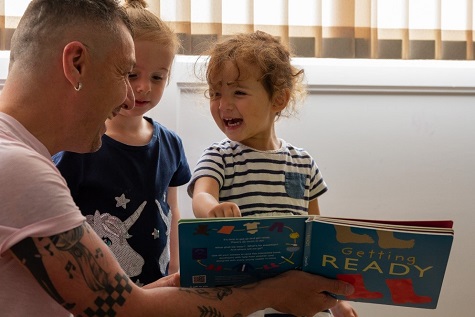5.4 Play and resources for children with complex medical needs
Books and stories

Books are sensory objects. You can touch them, taste them, turn the pages, play peek-a-boo, wear them like a hat or snap them like a crocodile. Many books have sensory elements such as flaps or textures – or even smells!
You can explore the information or stories in books in many ways.
The short films in the link below show sensory books being used in different ways. While you are watching, think about the different ways that books are experienced. If you incorporate sensory experiences and use books in varied ways in your setting as part of your everyday practice, then you’ll be helping all children to understand that books and stories can be experienced in different ways. This will help you create a more inclusive environment that welcomes a child with a disability.
Tactile book videos from Bookbug:
Off to the Beach
Off to the Park
Getting Ready
There is more information on the Bookbug website about ensuring that all children can access the Bookbug Explore pack by using images and recordings for Big Mack switches and GoTalk. If you’ve never heard of either of those before, then it’s time to be the explorer yourself!
Another way to share stories is by using the senses. The simplest or most familiar stories can be made exciting and inviting to all children. Think about how you might experience a story through your senses. If you told the story of the three little pigs, you could make pig noises or use a recording of a pig snort; you could include straw, sticks and some small bricks to touch and share. You could use a balloon pump to huff and puff like a wolf and a bowl of water for him to land in as climbs down the chimney.
Remember: it is very straightforward to create your own story that will be exciting to all children. Experiment! Pressing a big button to make a sound is something that all children love to do.
Activity 5.3 Resources for children with complex medical needs
Sensory activities
Children with complex medical needs may find that sensory activities are especially enjoyable. The movement of sunshine and wind on some special fabric outside can lead to all kinds of songs and peek-a-boo games. These are games and play that can draw all children into a shared game and of course, some children have strong sensory preferences and dislikes.

Make a list of objects and resources that provide a sensory experience and are likely to appeal to all children.
You may like to refer back to the Loose Parts Play Toolkit mentioned in Week 2.
Discussion
What did you come up with? Here are some examples:
|
|
Sharing books


As stated above, books are sensory objects. You could also bring a book to life by using some of the sensory items you listed in the activity above: crunching silver foil or a space blanket makes a sound like crunching on snow, and an ice cube is something cold that the children could touch.
When you work with a child with complex needs, you may be very focused on their needs and your support for them. However, you need to be aware of how you support their relationships with other children. One-to-one support does not mean you need to be the only person interacting with a child. You need to facilitate different ways of ensuring the child you are supporting gets the chance to play, laugh and experience everyday life alongside other children. Sometimes your support needs to be almost invisible.
Taking part in a child planning meeting
